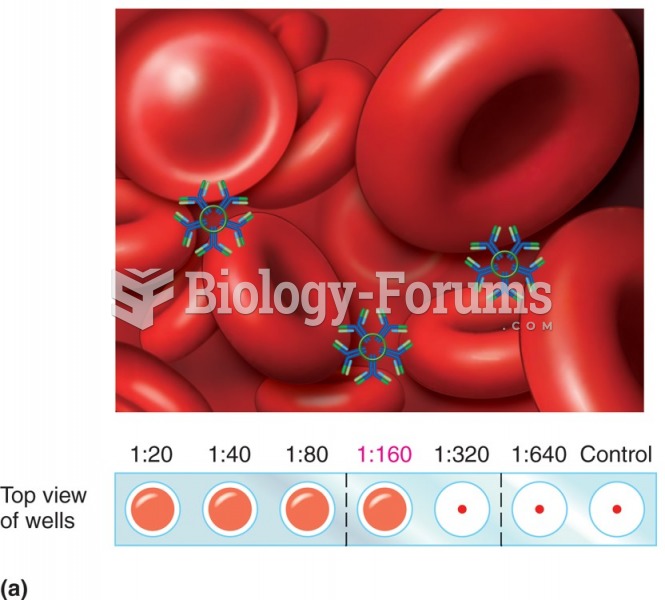|
|
|
Sildenafil (Viagra®) has two actions that may be of consequence in patients with heart disease. It can lower the blood pressure, and it can interact with nitrates. It should never be used in patients who are taking nitrates.
More than one-third of adult Americans are obese. Diseases that kill the largest number of people annually, such as heart disease, cancer, diabetes, stroke, and hypertension, can be attributed to diet.
Vampire bats have a natural anticoagulant in their saliva that permits continuous bleeding after they painlessly open a wound with their incisors. This capillary blood does not cause any significant blood loss to their victims.
Patients who have undergone chemotherapy for the treatment of cancer often complain of a lack of mental focus; memory loss; and a general diminution in abilities such as multitasking, attention span, and general mental agility.
There are more nerve cells in one human brain than there are stars in the Milky Way.
 Effects of excluding Helicopsyche borealis on benthic algal biomass: (a) two sets of tiles at the be
Effects of excluding Helicopsyche borealis on benthic algal biomass: (a) two sets of tiles at the be
 Addition of mineral nutrients to the boreal forest can have different effects on different plant spe
Addition of mineral nutrients to the boreal forest can have different effects on different plant spe





